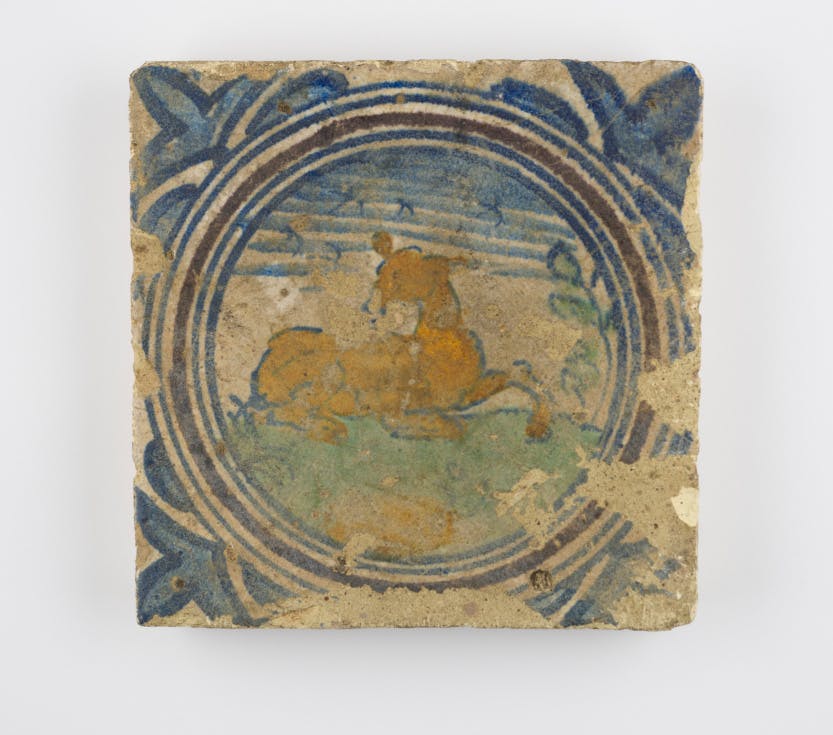Objects Unwrapped: A Tin-glazed Floor Tile Found at the Tower of London
Date: 10 December 2015
This tin-glazed ceramic floor tile is decorated with a deer in a landscape, surrounded by concentric circles and trefoil motifs in the corners. It would originally have formed part of a decorative floor, consisting of similar style tiles but with different animals and patterns in the centre.
Other known designs include dogs, bears, owls and even grass hoppers, as the central motif. Tin-glazed ceramics were manufactured on a commercial scale for the first time in London from 1570, during the reign of Elizabeth I. Prior to this highly decorated wares were imported from the continent.
The design of this tile is similar to Dutch imports of the time, but this example was almost certainly made in London, and probably only a stone’s throw away from the Tower itself! It could have been manufactured between 1571 and 1615 in nearby Aldgate, or between 1618 and 1650 in Southwark or Rotherhithe, both just across the River Thames.
The tile was discovered during excavations at the Tower of London, possibly near the Middle Tower, in the late 1930s. Historic Royal Palaces’ collections include several finds from this early excavation including many 13th to 18th century ceramics, which were conserved and heavily restored soon after they were discovered.
As well as giving an insight into how the Tower appeared in the early 17th century, such objects also reveal how approaches to archaeology, conservation and even display have changed over time. Sadly, we know very little about these early 20th century digs as much of the information has not survived.
This is compared to the expansive recording systems that are an essential part of the archaeological process today during both the excavation and post-excavation work, including producing databases and digital records of artefact assemblages. At Historic Royal Palaces, we have recently completed the cataloguing of the archaeological collections, by making sure each and every object is fully documented and photographed.
By doing so, we hopefully have ensured that these amazing objects will be around to be enjoyed for many more years to come!
More from our blog

The Lost Tiltyard Tower at Hampton Court Palace
15 December 2015
Archaeologists at Hampton Court Palace have uncovered the remains of one of the palace’s famous five lost Tiltyard Towers. The discovery of this green-glazed tile floor has solved a three-hundred-year-old mystery.

The Islamic World and Tudor England: ambassadors, rhubarb and sugar
05 May 2021
With over 3 million British Muslims currently celebrating the holy month of Ramadan, it’s a fitting time to explore how the Elizabethan and Jacobean court encountered the Islamic world. Misha Ewen is our new Curator of Inclusive History at Historic Royal Palaces and in her first blog she shares what she has been working on.

Astronomy at the Top of the White Tower
12 March 2018
The White Tower of the Tower of London has three square turrets and one that is circular. One of the most interesting uses for this circular turret took place in 1675 when it became Britain's first temporary royal observatory.

